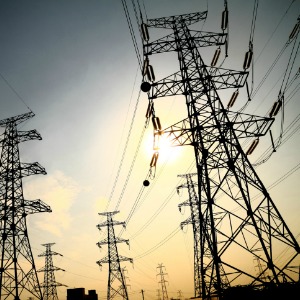 With its current transmission infrastructure, Nebraska has the potential to integrate at least 2 GW more of wind energy, according to a new report released by the Nebraska Power Review Board.
With its current transmission infrastructure, Nebraska has the potential to integrate at least 2 GW more of wind energy, according to a new report released by the Nebraska Power Review Board.
Furthermore, the study shows that a substantial expansion of the state, regional and interregional transmission systems could make Nebraska capable of integrating between 5 GW and 10 GW of additional wind energy. The report says that transmission build-out could cost anywhere from $1.5 billion to $4 billion.
This past legislative session, the board was mandated to undertake the Nebraska Renewable Energy Export Study, which The Brattle Group conducted. The report aims to identify the opportunities and challenges that impact the capability and desirability of developing 5 GW to 10 GW of renewable energy in Nebraska for export purposes and to provide options that the Nebraska legislature could consider.
According to the report, The Brattle Group focused on wind generation capacity as the primary renewable resource to be developed in Nebraska due to the "high quality" of the resource in the state.
In fact, data from the National Renewable Energy Laboratory shows Nebraska has the resource potential to produce about 918 GW of land-based wind power annually. However, the latest available statistics from the American Wind Energy Association say the state is home to a little over 810 MW of installed wind capacity.
Jeff Clark, executive director of The Wind Coalition, has welcomed the new Nebraska report.
"The study shows how viable wind energy investment and development is in Nebraska – something all Nebraskans should be excited about," he says.
The study makes some policy recommendations that could help foster this investment. These recommendations include a state-level production tax credit or investment tax credit, a transmission authority for renewable energy, renewable energy zone planning, and merchant wind projects outside of traditional power purchase agreements.
However, the report does note several challenges to wind power development in Nebraska.
For example, the report says the regional market for renewable generation is currently saturated. However, demand for additional renewable generation will likely emerge as costs decline relative to conventional resources, wholesale electricity prices increase, coal plants retire, and new environmental policies are implemented. The report says Nebraska will need to better position itself to be prepared to take advantage of emerging new demand for renewable generation.
The report also says developers in Nebraska face competitive disadvantages relative to some other states in the wind-rich Great Plains region, including lower financial incentives and lower wholesale power prices.
Nonetheless, as previously mentioned, the state has the potential to handle and export gigawatts more of wind power.
‘Nebraska has some of the best wind in the country but a surprisingly low amount of wind generation installed and under development,’ says Judy Chang, a Brattle principal and co-author of the study.
‘Nebraska policymakers and legislators have been working to increase the attractiveness of the state to renewable energy developers," she continues. "They have already reduced some barriers, including those related to limiting public power condemnation rights. We anticipate that Nebraska policymakers will consider the options laid out in our report to make decisions about further improving the economics and regulatory setting for renewable development.’
The Wind Coalition's Clark adds, "We look forward to the coming legislative session to working with lawmakers as they craft a future for Nebraska's energy economy, and we believe that the results of this study shape the coming discussions about the growth of renewable energy generation in Nebraska."
The full Nebraska Renewable Energy Export Study is available here.



